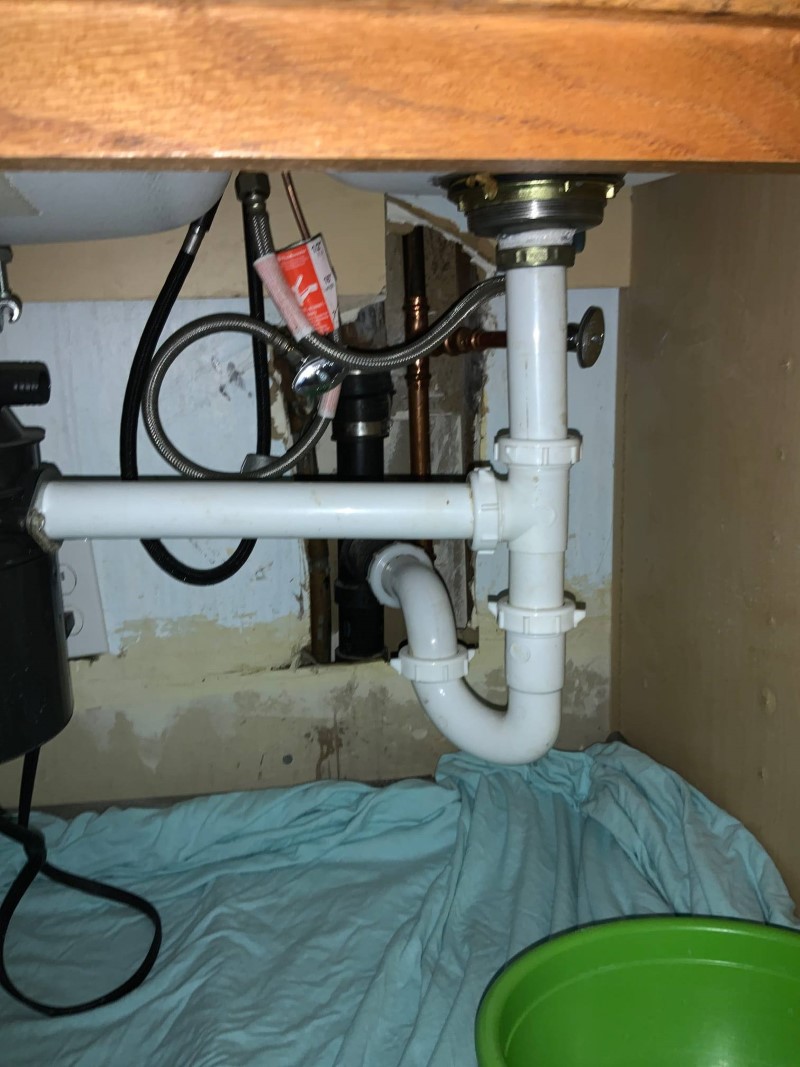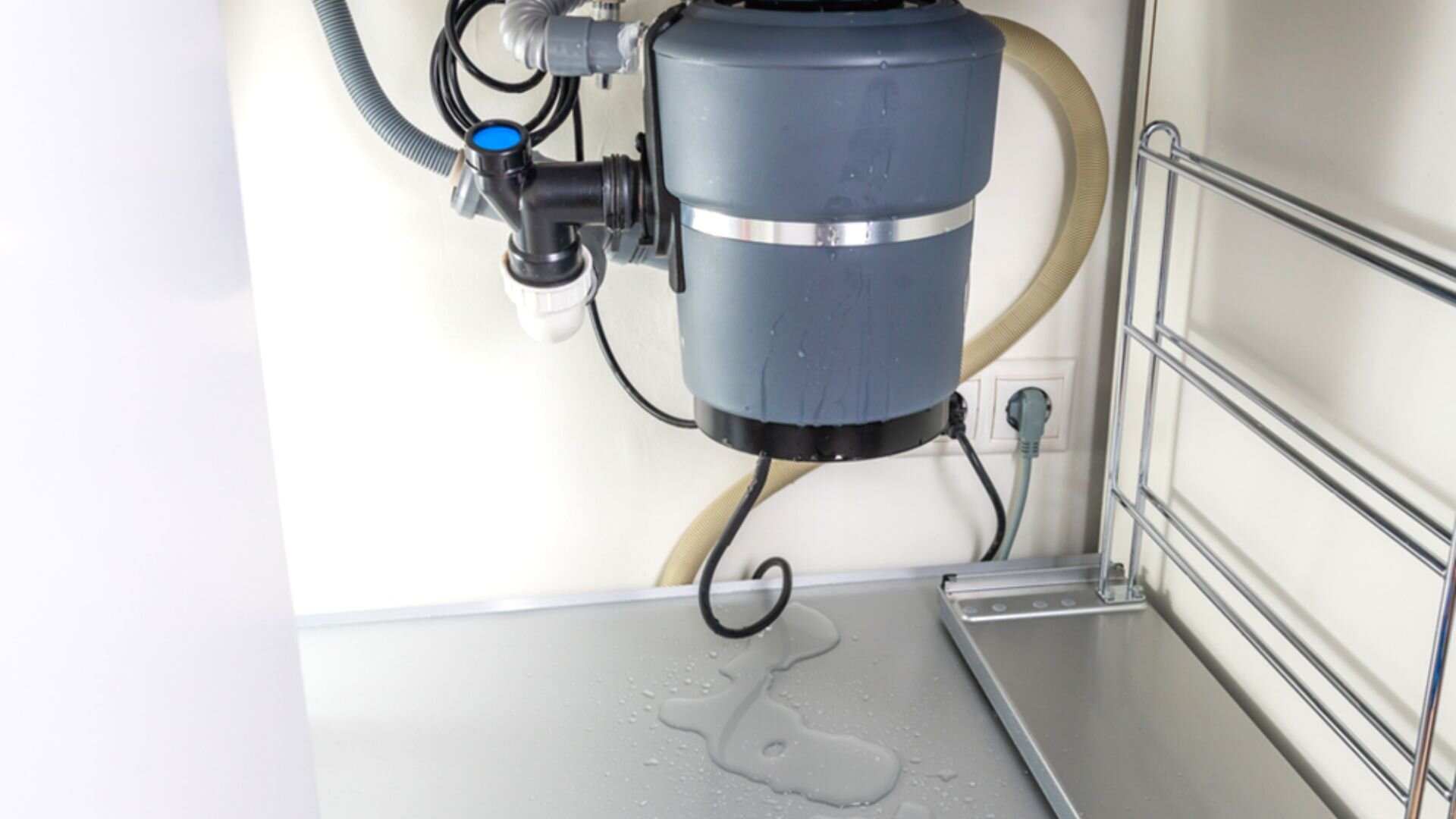Helpful Techniques for Repairing a Dripping Garbage Disposal
Schedule A Free EstimateWe have unearthed this post relating to Why Is directly below on the web and thought it made sense to talk about it with you in this article.

Waste disposal unit are important cooking area appliances that aid in disposing of food waste efficiently. Nonetheless, a leaking garbage disposal can be an aggravating and messy trouble to deal with. Thankfully, numerous leakages can be repaired easily with a couple of basic steps. In this write-up, we will discuss just how to take care of a leaking waste disposal unit properly.
Intro
Waste disposal unit are installed under cooking area sinks and are made to shred food waste right into smaller pieces, enabling it to travel through the pipes system easily. While these devices are normally trusted, leaks can occur over time as a result of wear and tear, loose connections, or damage to the device.
Usual Sources Of Leaks in Garbage Disposals
Worn Seals and Gaskets
Seals and gaskets play an essential role in avoiding water from dripping out of the garbage disposal. Gradually, these components can wear away, bring about leakages around the disposal device.
Loose Connections
The connections between the garbage disposal and the pipes system can come to be loose over time, triggering water to leakage out throughout procedure.
Splits or Holes in the Disposal Device
Physical damage to the garbage disposal, such as fractures or openings in the real estate, can also lead to leakages.
Identifying the Source of the Leak
Prior to trying to deal with a leaking waste disposal unit, it is important to identify the resource of the leak. This can usually be done through visual evaluation or by conducting basic tests.
Visual Assessment
Check the garbage disposal system very carefully for any type of indications of water leakage. Pay very close attention to areas around seals, gaskets, and connection factors.
Evaluating for Leakages
One means to test for leakages is by running water with the disposal unit and checking for any type of noticeable indicators of leak.
Tools and Materials Needed for Repairing a Leaking Waste Disposal Unit
Prior to starting the fixing process, gather the required tools and materials, consisting of a screwdriver, flexible wrench, plumbing technician's putty, substitute seals or gaskets, and epoxy or patching material for fixing cracks or openings.
Step-by-Step Overview to Repairing a Dripping Garbage Disposal
Switch off the Power
Prior to trying any repairs, ensure that the power to the garbage disposal device is switched off to avoid the danger of electric shock.
Find the Leakage
Determine the precise place of the leakage and establish the reason.
Tighten up Connections
Utilize a wrench to tighten up any kind of loose links between the disposal unit and the pipes system.
Replace Seals or Gaskets
If the leakage is because of used seals or gaskets, eliminate the old elements and replace them with new ones.
Patching Cracks or Openings
For cracks or holes in the disposal unit, usage epoxy or an appropriate patching material to secure the broken area.
Examining the Waste Disposal Unit After Fixing
As soon as the repair is full, evaluate the waste disposal unit by running water with it to ensure that the leakage has been resolved.
Preventive Maintenance Tips to Prevent Future Leakages
To stop future leaks, it is vital to do routine maintenance on your waste disposal unit. This consists of maintaining it tidy, preventing placing non-food things or tough objects down the disposal, and periodically looking for leaks or other issues.
Verdict
In conclusion, fixing a dripping waste disposal unit is a relatively simple process that can be completed with fundamental tools and materials. By following the actions laid out in this write-up and practicing preventative maintenance, you can keep your waste disposal unit in good working problem and prevent costly repairs in the future.
What to Do About a Leaking Garbage Disposal
A leaking garbage disposal often goes unnoticed until you confront a sopping cabinet, a foul-smelling puddle, or an audible drip-drip-drip from the unit. The fix can be frustrating, too, because the leak can stem from a number of components in the system. Fortunately, with a little sleuthing, you can zero in on the leak and—depending on the exact location—stop the icky oozing and repair the component that caused it. Worst case scenario, if it turns out that the garbage disposal must be replaced, installing a new one is a reasonable do-it-yourself task for those with basic plumbing skills. Read on to keep the cash you’d otherwise hand over to a pro.
Prepare to find the leak
Prior to testing the garbage disposal for leaks, unplug it at the wall outlet and turn off the power from the breaker box to prevent electrical shock. Then insert a watertight sink stopper into your sink drain and wipe the unit dry with a clean cloth. In any handy container, mix a few drops of food coloring into a few cups of water, and pour the dyed water onto the sink stopper to help you locate the leak.
Investigate the source
the top, where the disposal meets the sink drain the side, where the dishwasher hose or main drain pipe connects to the disposal or the bottom of the unit Inspect each of these locations while gliding a light-colored rag over the unit; the dyed water will readily show on the rag and reveal the location of the leak. If a leak isn’t immediately apparent, remove the sink stopper and pour a few more cups of dyed water down the sink drain, then check for leaks again. Leaks near the top of the unit are more likely to show themselves while the sink is plugged, while side and bottom leaks are more noticeable while the sink is unplugged.
The metal sink flange that sits directly inside the sink drain is typically sealed around the top with plumber’s putty (a clay-like sealant) and then secured from under the sink with bolts. If the plumber’s putty deteriorates, or the bolts loosen, the flange can no longer form a watertight seal between the sink drain and the disposal—which could cause a leak at the top of the unit.
To reseal the leaky flange, you must first detach the garbage disposal. Start by loosening the screws securing the main drain pipe to the disposal, then loosen the screws in the metal clamp securing the dishwasher hose to the disposal and detach the drain pipe and dishwasher hose from the disposal. Loosen the screws in the mounting ring that connects the disposal to the metal mounting assembly beneath the sink, then pull down the disposal and carefully set it on a clean, dry surface. Loosen the bolts in the mounting assembly with a wrench, then pull down the mounting assembly and set it near the disposal.

I am very inquisitive about Why Is and I really hope you enjoyed my article. Please take a moment to distribute this post if you enjoyed reading it. Thanks a lot for going through it.
Request Free Estimate